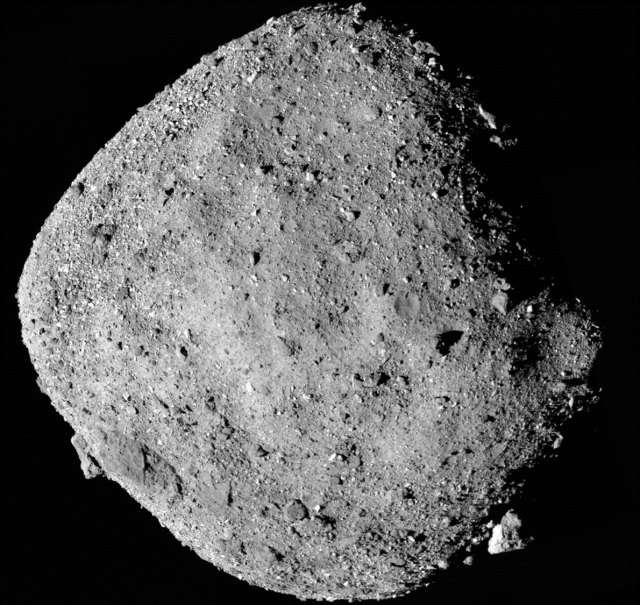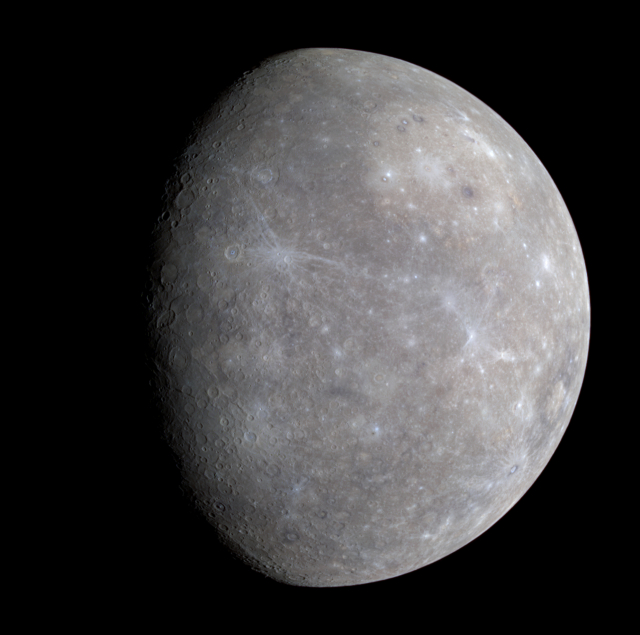Asteroid Bennu regularly approaches Earth at close range, about once every six years. This massive space object, about 49 meters in diameter, was discovered in 1999, and NASA astronomers keep a close eye on it. There is a danger that Bennu could enter Earth’s orbit and collide with it on September 24, 2182. If that happens, the impact would release 1,200 megatons of energy.
Although the likelihood of a collision with Earth is currently low, Bennu has been classified as a “potentially hazardous asteroid”: it could come within 7.48 million kilometers of us.
Advertisement
Space
Mercury, the closest planet to Earth and the other planets in our system, is very inhospitable: over the scorched surface there for 59 Earth days, the temperature remains at 430 degrees Celsius. However, while space tourism fans are justifiably wary of Mercury, scientists have a genuine interest in the planet.
In 1974, NASA’s Mariner-10 mission discovered peculiar slopes called “scarps” on Mercury. They were formed due to faults underneath and subsequent “thrusting” of plates. This is evidence of the planet’s compression as a result of thermal cooling.
Why is it that sometimes time flies by quickly and other times it drags agonizingly slow?
Chronostasis
Can time stand still? For the human psyche, it can. This phenomenon is called chronostasis. To illustrate it, as a rule, give the example of the second hand. If a person’s gaze inadvertently lingers on the dial, the second hand seems to stop briefly, and its next “tick” seems longer.
The phenomenon of chronostasis is explained by the peculiarities of human vision. Our eyes continuously make saccades – quick movements that seem to scan the surrounding world. If a person perceived reality the way a video camera does, he would see everything blurred.
But our brain suppresses the data that is received by the optic nerve as a consequence of a saccade and prolongs the distinct image received before it begins. Chronostasis is a different way to experience this feature of vision. Faced with a new movement, the brain makes a kind of screenshot, subsequently bringing the perception of time to the usual one.
Recalibration
Humans receive data through a variety of sensory channels, not all of which are equally fast and efficient. For example, in low visibility conditions, vision is impaired and visual information slows down. In good light conditions, tactile information takes longer to process than visual information.
For example, while walking through a forest, a person steps on a branch and hears a crunch. Is the crunch actually caused by the branch he trampled? Or maybe it was a predator crunching nearby? To survive, humans need to know this, causing the brain to synchronize sensory channels and motor skills.
German scientists have launched a particle gas pedal tens of millions of times smaller than the LHC
A fresh publication in Nature states that scientists from the German University of Erlangen-Nuremberg have conducted the first successful launch of the world’s smallest particle gas pedal. It is noted that the tiny technological triumph, the dimensions of which are comparable to the size of a small coin, can open the door to many applications, in particular, for the use of miniature particle gas pedals in medicine and directly in the body of patients.
The new machine, known as the Nanophotonic Electron Accelerator (NEA), consists of a small microchip on which is placed an even smaller vacuum tube made of thousands of individual “columns”. Scientists achieve acceleration of electrons by directing small laser beams into these very “columns”.
In the length of the main gas pedal tube NUE does not exceed half a millimeter, which is a fabulous 54 million times smaller than the ring of 27 kilometers in the largest and most powerful particle gas pedal in the world, namely the Large Hadron Collider (LHC) in the Swiss CERN, with the help of which many revolutionary discoveries were made. The width of the NUE tunnel, in turn, reaches only 225 nanometers.
The collision of two neutron stars following a decaying orbit is a rather rare event. In the entire Milky Way galaxy, among 100 billion stars, scientists identify only 10 double stars destined to collide.
In a publication in arXiv scientists from the University of Illinois at Urbana-Champaign set the task of answering the question of what danger such a collision could carry for life on Earth, if it does happen. According to the forecasts of specialists, the answer to this is very unambiguous – nothing good if the explosion occurs at a certain distance.
During their research, the researchers determined that the main danger comes from cosmic rays, if our planet is not on the path of the gamma-ray burst kilonova at a distance of 35 light years. If we are on this path, then according to scientists, the fatal proximity is 300 light years, but at the same time the planet must be in a certain location.
Advertisement





